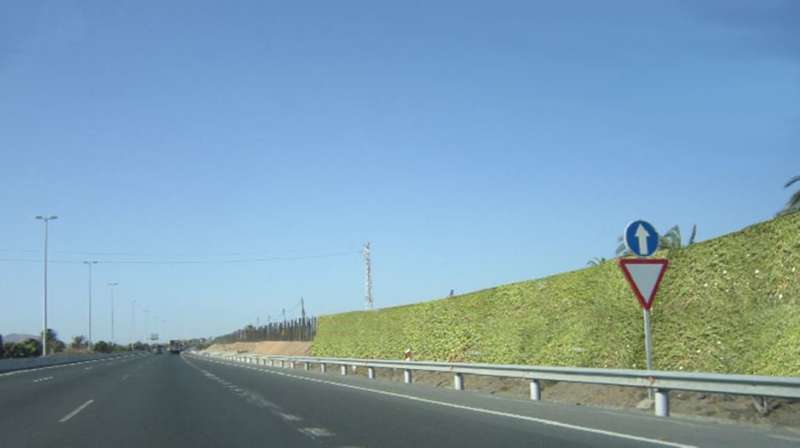New greener and more efficient noise barriers

Researchers from Universidad Politécnica de Madrid (UPM) have developed a new vegetal and affordable noise barrier that significantly reduces both noise and the environmental and landscape impact.
Noise barriers muffle the transmission of traffic noise and constitute a relevant factor in urban action plans. However, their effectiveness varies according to multiple factors. The new green noise barrier developed by two researchers from the School of Building at UPM use the raw material resulting from the pruning of plants and gardens. The combination of this vegetable waste with a local substrate and water result in a new mixture of suitable acoustic and structural characteristics for these types of barriers.
Today, the commercial noise barriers are made of different materials such as concrete, brick, wood, and glass that consume material resources in the manufacturing process and generate a large amount of waste at the end of their useful life.
Researchers have now developed barriers made of recycled elements that reduce the use of materials and reuse carpet waste, scraps of paper and fibrous materials. In this study, the raw materials used by UPM researchers come from garden waste, specifically palm leaves. Using local materials provides savings for both transport and environmental impact, offering a solution to the excessive amount of waste.

In order to adapt these leaves waste to the construction of noise reduction devices, researchers mixed substrate with water to produce a mixture of suitable acoustic and structural characteristics. Additionally, vegetal species can be added to the front face of the barrier to improve both visual and aesthetic impact.
Vegetable waste products have good acoustic attenuation properties that, when mixed with substrates, improve their mechanical properties. Therefore, these vegetal barriers are a great solution from the acoustic, mechanical, ecological, sustainable and landscaping perspective.
Provided by Universidad Politécnica de Madrid



















